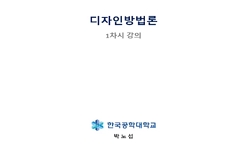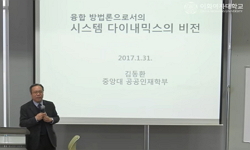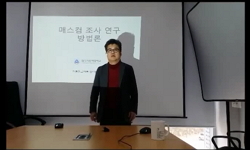본 연구는 생명윤리학(bioethics)이 출현하게 된 사회ㆍ문화적 배경과 그것의 학제간 성격을 살펴보고, 또한 생명윤리학의 접근 방법론을 알아보았다. 생명윤리학의 출현은 첨단과 학기술의 ...
http://chineseinput.net/에서 pinyin(병음)방식으로 중국어를 변환할 수 있습니다.
변환된 중국어를 복사하여 사용하시면 됩니다.
- 中文 을 입력하시려면 zhongwen을 입력하시고 space를누르시면됩니다.
- 北京 을 입력하시려면 beijing을 입력하시고 space를 누르시면 됩니다.
부가정보
국문 초록 (Abstract)
본 연구는 생명윤리학(bioethics)이 출현하게 된 사회ㆍ문화적 배경과 그것의 학제간 성격을 살펴보고, 또한 생명윤리학의 접근 방법론을 알아보았다. 생명윤리학의 출현은 첨단과 학기술의 발달과 문화적 변화에 의해 제기된 도덕적 혼란과 복잡성, 그리고 도전들에 어떻게 대적할 것인가에 대한 철학적 반성이다. 죽음의 판단 기준은 무엇인가 그리고 인간 생명의 조적 가능성과 생명 복제기술의 발달로 인한 인간 복제의 문제 등에 대한 바람직한 해결책이 요구되었다. 이에 대해 전통 윤리이론(공리주의, 의무론 등)은 너무 일반적이고 추상적이어서 이러한 구체적이고 복잡한 사례에 대한 해결책을 제시할 수 없기 때문에, 그 성격이 다른 도덕원리의 필요성에 의해서 나타난 새로운 학문분야가 생명윤리학이다. 그런데 생명윤리학은 어떤 하나의 원리나 담론이 주도하는 학문분야외 달리 철학, 윤리학, 신학, 의학, 법학 등 광범위한 토대를 가진 학제간(interdisciplinary) 탐구로 이루어 졌기 때문에, 그것의 적합한 접근방법이 요구되었다. 이에 따라 크게 세 가지 접근방법이 제안되었다. 하나는 전통 윤리이론과 같은 높은 수준의 근본원리에 의존하지 않고, 네 가지 중간수준의 원칙에 의존하는 접근방법이다. 그것은 인간에 대한 존경의 원칙, 피해 회피 원칙, 선행 원칙, 정의 원칙과 같은 네 가지 중간 수준의 도덕원칙을 우리가 처한 도덕문제에 적용시켜 도덕적 해결책을 추론해 내는 하향적 방법(upward-down)이다. 이러한 연역적 방법론의 대표적 도덕이론은 "원칙주의"(princiolism)이다. 다음엔 사례에 기초한 방법론으로서 이 방법은 우리로 하여금 사례들을 검토 그리고 재검토하도록 요청하고 그리고 그 사례들을 환경에 기초한 적합한 개념 혹은 공통의 도덕 격률 하에 있는 분류법으로 정돈한다. 이 방법은 구체적인 도덕문제에서 일반적인 도덕원리로 나아가는 '상향적 방법'(downward-up)이다. 이러한 귀납적 방법론의 대표적인 도덕이론은 "결의론"(casuistry)이다. 마지막으로 공동체주의에 근거한 방법론으로서 이러한 접근은 생명윤리학의 출발점이 개인보다는 공동체이어야 한다는 것이다.
다국어 초록 (Multilingual Abstract)
Beginning in the 1960s, the foundations of Hippocratic ethics came under a cross fire of criticism from a variety of sources as followings; Beginning in the 1950s' Remarkable technological developments opened up whole new sets of possibilities in medi...
Beginning in the 1960s, the foundations of Hippocratic ethics came under a cross fire of criticism from a variety of sources as followings; Beginning in the 1950s' Remarkable technological developments opened up whole new sets of possibilities in medicine. The era witnessed the development of medical technology such as kidney dialysis, organ transplantation, and effective and safe contraception along with safe abortions. And the 1960s was a time of rebellion against formal authorities. The civil rights movement, the anti-Vietnam war caused large numbers of people to question paternalism in many spheres of life. The autonomy of the physician to determine what constitutes harm and benefit was likewise called into question. These changes significantly influenced the development of the field of bioethics.
The discipline of bioethics is not unified by single dominant theory of methodology. It reflects the interdisciplinary features in bioethics. These highly inter-disciplinary discussions brought considerations from every side into the debate. The two disciplines, moral philosophy and moral theory, provided their skills for the debates. Gradually, scholars from the two academic disciplines that had traditionally studied morality, philosophy and theology, began to join the physician. However, They did not submerge the interdisciplinary features in any single ethical theory. Because bioethics has a practical end, to guide decisions and to shape policy, it is not rare that out of the welter argument comes substantial consensus. Many philosophers doubt that there can be a satisfactory ethical theory of the kind that philosophers have traditionally sought, because morality cannit be codified in a set of rules, Some have sought to resolve moral dilemmas by side-stepping these problems confronting foundational methods. One way is to drop the use of traditional ethical theory and guide the resolution of moral controversies by middle-level principles.-"principlism" Another way to approach the problems presented in traditional ethical methods is to address the problems of the specification of principles to particular moral controversies by working with particular moral cases.-"casuistry" And the limitation of different method in bioethics have led some in the field to search of a communitarian basis. This method argues that the starting point for bioethics ought to be the community rather than the individual. However, a consensus on methodological issues in bioethics seems an unlikely accomplishment, because people treat method in several way.
목차 (Table of Contents)
- 1.머리말
- 2.생명윤리학 출현의 사회ㆍ문화적 배경
- 3.생명윤리학의 학제간 성격
- Ⅳ.생명윤리학의 접근방법
- 5.맺음말
- 1.머리말
- 2.생명윤리학 출현의 사회ㆍ문화적 배경
- 3.생명윤리학의 학제간 성격
- Ⅳ.생명윤리학의 접근방법
- 5.맺음말
동일학술지(권/호) 다른 논문
-
- 새한철학회
- 고창택
- 2001
- KCI등재
-
- 새한철학회
- 김연숙
- 2001
- KCI등재
-
한국철학 정립을 위한 중세 동ㆍ서양철학의 본체론 비교연구
- 새한철학회
- 김인권
- 2001
- KCI등재
-
- 새한철학회
- 김준연
- 2001
- KCI등재






 RISS
RISS DBpia
DBpia







